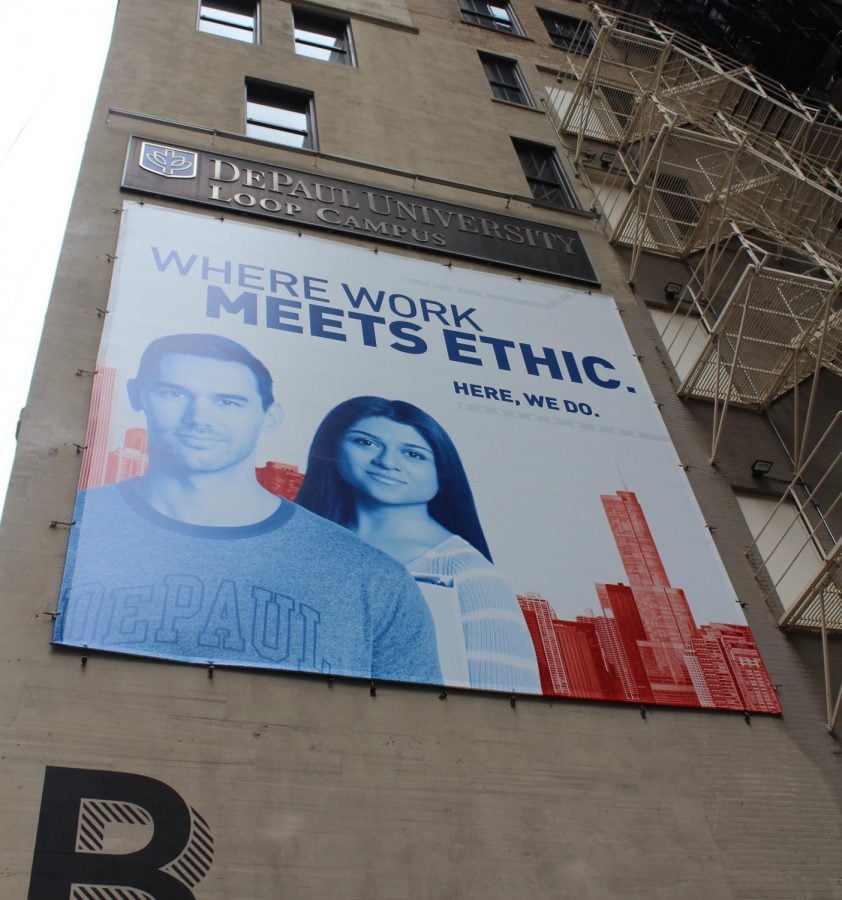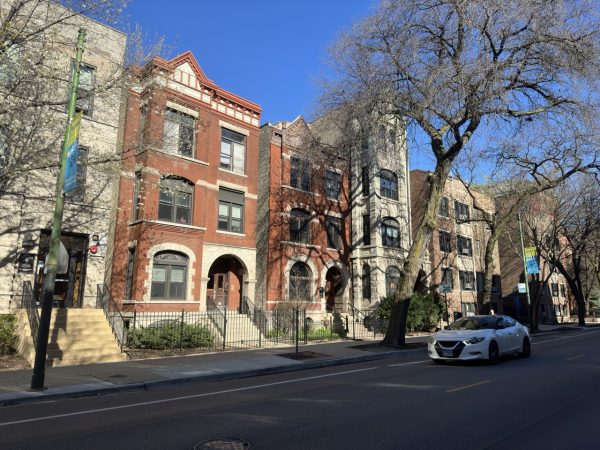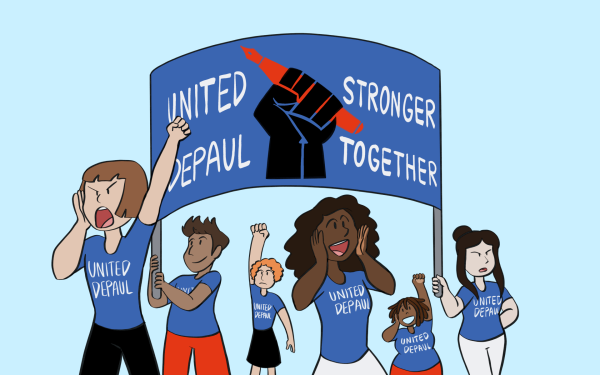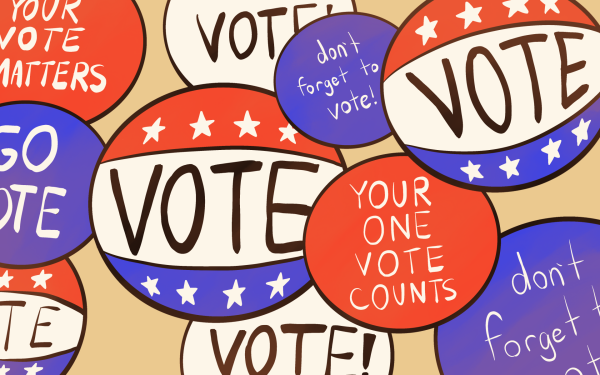Many of the models in ‘Here, We Do’ campaign aren’t students
In April, DePaul University launched its ‘Here, We Do’ campaign in an effort to highlight the accomplishments and talents of the student body. On the enormous banner right outside of the DePaul Center, two people are posed in DePaul gear with the words “Where work meets ethic” plastered next to their faces. The man, Joey Heyworth, however, was never a student at the university and is just one example of the plethora of outside talent used to pose as the students DePaul claims to be proud of.
Heyworth attended Boston University. Having moved to Chicago to pursue a career in modeling, he had joined BMG Talent just a few weeks prior to being offered a job portraying a student in the campaign. “The whole job is representing people and companies that you have little to no affiliation with,” said Heyworth.
According to Heyworth, he was given virtually no information about the purpose of the campaign or the mission of DePaul. “They just told us certain words to try to embody during the shoot. Mine were confidence and power.”
In regards to whether or not it is standard practice to hire outside talent for university campaigns, David Kalsbeek, the senior vice president for Management and Marketing at DePaul, said, “It varies by the university and the kind of resources they have and how extensive they’re trying to mount a campaign and how quickly. With this, we were moving pretty quickly.”
Sarah Partin is the associate vice president of University Marketing at DePaul and the ‘Here, We Do’ campaign was her brainchild. “The goal was really to increase awareness and visibility within the Chicago market to complement the recruitment efforts that we do continuously,” said Partin. She did not shy away from admitting that the talent used in the campaign was a mixture of students and outside hires, but rationalized the external ‘talent’ as a necessity because of the extensive times of the shoots. Heyworth detailed, on the other hand, that “the whole ordeal was very brief.”
While it makes sense to have wanted professional models for the massive campaign, some DePaul students who also have modeling experience felt cheated. “I feel like no one knew about (the casting). I would’ve loved the opportunity,” said Devin Garcia, a junior at DePaul with previous modeling jobs under his belt. “It would have been more genuine.” Partin, however, said that the marketing department did their due diligence to recruit as many students as possible and even held open-calls on Facebook.
“I don’t see it as any kind of deliberate misrepresentation of anything. It’s an ad campaign,” said Kalbeek. Todd Pinta was a student who acted in one of the commercials for the campaign and agrees with Kalbeek’s sentiment. “I don’t think there’s anything wrong with hiring non- students. They wanted it to look the best it could and they did get a lot of students to participate in it,” said Pinta.
While the campaign is seen by students mostly on campus, it was extensive in its reach and scope. It is a professional ad campaign done in collaboration with an external agency. Deadlines need to be met and professionalism is a must in order to get it to market within a condensed timeframe.
The campaign, overall, has been well received and has given a generation of DePaul students a fun motto to identify themselves with. Recent years have not been kind to DePaul’s public image, and the campaign came at a wonderful time. “Creating positive buzz was definitely a nice payoff, but it wasn’t what drove us to do it,” said Kalsbeek.
Ultimately, the mission of the DePaul student body is presented clearly and in a visually appearing manner, even if it is done using people who have no idea what that mission is.












